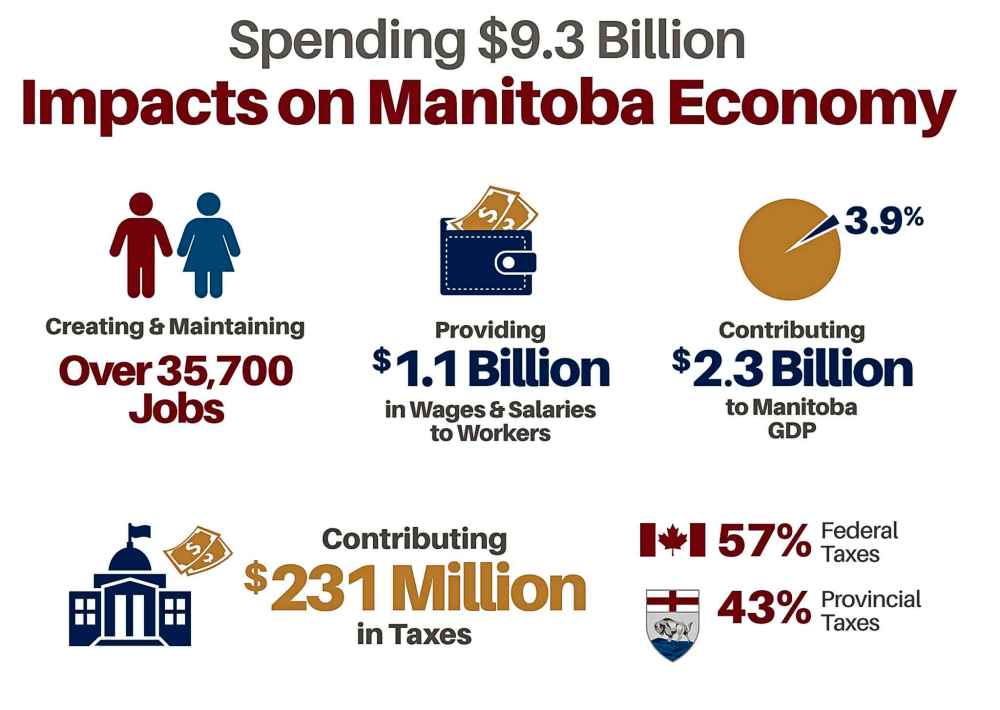Indigenous economics boost our bottom line
Read this article for free:
or
Already have an account? Log in here »
To continue reading, please subscribe:
Monthly Digital Subscription
$19 $0 for the first 4 weeks*
- Enjoy unlimited reading on winnipegfreepress.com
- Read the E-Edition, our digital replica newspaper
- Access News Break, our award-winning app
- Play interactive puzzles
*No charge for four weeks then billed as $19 plus GST every four weeks. Offer only available to new and qualified returning subscribers. Cancel any time.
Read unlimited articles for free today:
or
Already have an account? Log in here »
Hey there, time traveller!
This article was published 21/01/2019 (2179 days ago), so information in it may no longer be current.
Manitobans entered the new year with news that Indigenous individuals, businesses and governments injected $9.3 billion into Manitoba’s economy in 2016.
These were the findings offered in a wide-ranging report on Indigenous spending and its effects on the Manitoba economy, authored by researchers at Brandon University, Manitoba Keewatinowi Okimakanak (MKO) and the Southern Chiefs Organization (SCO). The data are, in a word, enlightening.
The report says that in 2016, there were approximately 700 Indigenous businesses and more than 60 governments responsible for creating more than 35,000 jobs and $1.1 billion in salaries, contributing around $2.3 billion to Manitoba’s gross domestic product. This constitutes around four per cent of Manitoba’s total economy.

In addition, First Nations governments annually generate an estimated $230 million in economic activity for provincial and federal governments and bring in around $400 million in infrastructure spending for roads, construction and work to build urban reserves.
All of this has huge ripples throughout Manitoba. Small-town economies have been saved by First Nations spending. Specific areas of Winnipeg have been economically revitalized by urban reserve development. Some Manitoba industries — such as fishing and tourism — are driven by Indigenous businesses.
As the report states, “Dollar after dollar, First Nations spending strengthens the Manitoba economy.”
The report has some gaps. The Métis, for example, were not included, but are major economic players in the province. In September, the Manitoba Metis Federation announced a $154-million deal with the federal government to settle a long-standing land dispute — money that will undoubtedly be invested in this province.
This report could help to reverse the mistaken assumption that Indigenous communities pull money from economies. The data show quite the opposite. Indigenous communities are an economic boon for Manitoba, benefiting virtually everyone.
The report suggests that if Indigenous Peoples received the same education and achievement rates as non-Indigenous Peoples, an additional 100,000 jobs and $2.8 billion of gross domestic product would be injected into Manitoba’s economy.
As such, Manitoba is the site of a huge opportunity. While the rest of Canada is experiencing population reductions because of the aging and retirement of baby boomers, Manitoba is not following this trend. There are more children in Manitoba under the age of 15 than seniors over the age of 64. There are also more young people aged 15 to 34 than adults aged 51 to 70.

Who constitutes this growth? Indigenous young people. First Nations people make up 10.5 per cent of Manitoba’s population, but almost 20 per cent of children aged 14 and younger. From 2006 to 2016, Manitoba’s population increased at a rate of 9.5 per cent, while the First Nations population increased by 29.7 per cent. Indigenous youth are Manitoba’s fastest-growing resource potential.
Indigenous youth are Manitoba’s future employees, business owners and the professionals who will make up this province’s future. This isn’t a political point; this is reality. But at the same time, Indigenous youth make up the largest populations in the child welfare system and jails, and still suffer dropout and suicide rates three to four times the national average.
The question is whether lawmakers and politicians will recognize that an investment in Indigenous young people is an investment not just in Indigenous economies, but in the overall fiscal health of the province. The statistics don’t lie. And if the numbers help us confront stereotypes and change the way we think and act, the result will be a stronger Manitoba.







DavidCooper.jpg?h=215)

